
Students will use their knowledge of summarizing data sets with multiple categories using a dot plot.
- Subject:
- Mathematics
- Material Type:
- Lesson Plan
- Author:
- Out Teach
- Date Added:
- 07/22/2021

Students will use their knowledge of summarizing data sets with multiple categories using a dot plot.
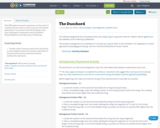
This OER explores the basic operations of a Duochord. It contains both an activity as well as resources for further exploration. It is a product of the OU Academy of the Lynx, developed in conjunction with the Galileo's World Exhibition at the University of Oklahoma.
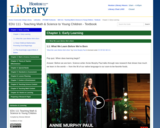
Compiled to support a course on teaching math and science in Early Childhood Education. Chapters include: Early Learning; Math & Science Connections; Theory & Teacher Effectiveness; Special Needs; Standards & Assessment; Lesson Planning; Centers & Environment; Teaching Science Content; Teaching Math Content; and Hands-on Learning.
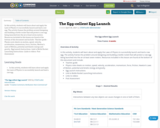
In this activity, students will learn about and apply the Laws of Physics to successfully launch and land a raw egg. The activity frames the problem around designing and building a bottle rocket that will protect a raw egg being launched into the air at least seven meters. Resources included in this lesson are found at the bottom of this document and include:
-Teacher guide
-Physics note sheets on motion, speed, velocity, acceleration, momentum, force, friction, Newton’s Laws of Motion, potential and kinetic energy and gravity.
-Egg Launch Instructions
-Link to Bottle Rocket Launching Instructions
-Links to videos
-Post Assessment
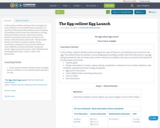
In this activity, students will learn about and apply the Laws of Physics to successfully launch and land a raw egg. The activity frames the problem around designing and building a bottle rocket that will protect a raw egg being launched into the air at least seven meters. Resources included in this lesson are found at the bottom of this document and include:
-Teacher guide
-Physics note sheets on motion, speed, velocity, acceleration, momentum, force, friction, Newton’s Laws of Motion, potential and kinetic energy and gravity.
-Egg Launch Instructions
-Link to Bottle Rocket Launching Instructions
-Links to videos
-Post Assessment
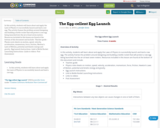
In this activity, students will learn about and apply the Laws of Physics to successfully launch and land a raw egg. The activity frames the problem around designing and building a bottle rocket that will protect a raw egg being launched into the air at least seven meters. Resources included in this lesson are found at the bottom of this document and include:
-Teacher guide
-Physics note sheets on motion, speed, velocity, acceleration, momentum, force, friction, Newton’s Laws of Motion, potential and kinetic energy and gravity.
-Egg Launch Instructions
-Link to Bottle Rocket Launching Instructions
-Links to videos
-Post Assessment
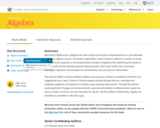
Elementary Algebra is designed to meet the scope and sequence requirements of a one-semester elementary algebra course. The book’s organization makes it easy to adapt to a variety of course syllabi. The text expands on the fundamental concepts of algebra while addressing the needs of students with diverse backgrounds and learning styles. Each topic builds upon previously developed material to demonstrate the cohesiveness and structure of mathematics.
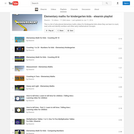
Series of videos for elementary students on maths by eLearnin

In this lesson, students compare and contrast emissions from different modes of transportation and explore the concept of transportation planning.
Step 1 - Inquire: Students analyze a bar graph of carbon dioxide emissions by different modes of transportation and calculate the most environmentally conscious modes of travel based on emissions.
Step 2 - Investigate: Students analyze commuter survey results of the top concerns with public transportation and complete real-world math problems based on different transportation scenarios, calculating the difference in carbon emission outputs.
Step 3 - Inspire: Students learn about transportation planners and watch a video about Hong Kong's transit system.

The purpose of this activity/lesson is to identify the type and availability of employment opportunities inyour community.
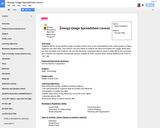
Students will be using real-life energy use data to learn how to use spreadsheets and create graphs to better organize and view data. Discussions can then follow to analyze the data and explain the usage. Real rates are then provided, and students can use the electricity consumed data to create a utility bill for the consumer and compare the standard Residential Service charges to if the member were instead billed by the “Time of Use” rate.
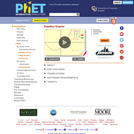
Learn about graphing polynomials. The shape of the curve changes as the constants are adjusted. View the curves for the individual terms (e.g. y=bx ) to see how they add to generate the polynomial curve.
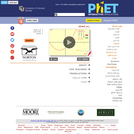
Learn about graphing polynomials. The shape of the curve changes as the constants are adjusted. View the curves for the individual terms (e.g. y=bx ) to see how they add to generate the polynomial curve.
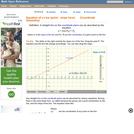
An interactive applet and associated web page that demonstrate the equation of a line in point-slope form. The user can move a slider that controls the slope, and can drag the point that defines the line. The graph changes accordingly and equation for the line is continuously recalculated with every slider and / or point move. The grid, axis pointers and coordinates can be turned on and off. The equation display can be turned off to permit class exercises and then turned back on the verify the answers. The applet can be printed as it appears on the screen to make handouts. The web page has a full description of the concept of the equation of a line in point - slope form, a worked example and has links to other pages relating to coordinate geometry. Applet can be enlarged to full screen size for use with a classroom projector. This resource is a component of the Math Open Reference Interactive Geometry textbook project at http://www.mathopenref.com.
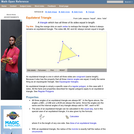
An interactive applet and associated web page that demonstrate equilateral triangles (all sides the same length). The applet presents an equilateral triangle where the user can drag any vertex. As the vertex is dragged, the others move automatically to keep the triangle equilateral. The angles are also updated continuously to show that the all interior angles are always congruent. Applet can be enlarged to full screen size for use with a classroom projector. This resource is a component of the Math Open Reference Interactive Geometry textbook project at http://www.mathopenref.com.
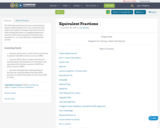
The following math lesson focuses on developing a deeper understanding of the value of fractions and allows the students to compare and order fractions while making decisions in a shopping experience. Learners will be better prepared to perform basic operations (+,-,x,/) once they have completed this module.

Explore size estimation in one, two and three dimensions! Multiple levels of difficulty allow for progressive skill improvement.

Students estimate the numbers of objects in situations in which counting is not feasible or necessary.

As mentioned in the syllabus, we are using MS Excel for statistical analysis in our OER stats course. We have, therefore, created three templates, one for each of the three units that the course is divided into, in order to help students make necessary calculations. Creating templates was a necessary steps since students are not expected to know how to use Excel functions for statistics and these templates are to guide students into getting relevant stats for their data, such as average, median, histograms, etc. Each template is divided into separate spreadsheets according to the topics. These templates help cut down the tedious work of evaluating statics and help students focus more on the concepts and analyse the results.
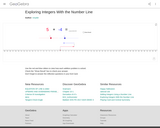
This simulation allows you to use a slider to see how positive and negative integers add on a number line.